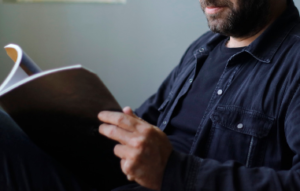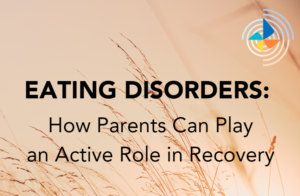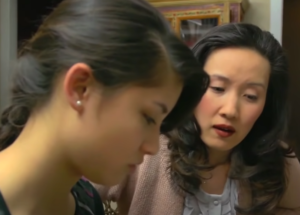Psychotherapy
Many different types of therapy are used to treat eating disorders. They usually involve talking with a trained professional. That person’s role is to help you to learn about yourself and to recognize and face challenges or behaviors that are interfering with daily life. With help, people with eating disorders can become more confident and learn ways to cope with difficult situations. Therapy can also help a person to deal with other mental health problems that are associated with eating disorders, such as anxiety, depression, or substance misuse. Therapy can be done on an individual basis, in a group, or with the person’s family.
The forms of psychotherapy that have good outcomes for eating disorders are:
Family-Based Therapy (FBT)
FBT is also known as the Maudsley Approach. FBT is an evidence-based treatment for youth with eating disorders, including anorexia nervosa and bulimia nervosa. In FBT, parents play an active role in helping their child recover from an eating disorder. Parents first take back control of their child’s eating, and help them eat what their body needs, and (for people who are underweight), how to get back to a healthy weight. Then parents slowly hand control of eating back to their child. When the child is ready, there is a brief final phase in which the family works on communicating about adolescent issues that may have been put on hold during the medical crisis of the eating disorder.
Adolescent issues might include independence, peer and romantic relationships, or transitions to college/university. Family members are seen as the ones who know their loved one best. Parent involvement in treatment and support is especially important for children and youth with eating disorders. FBT should be given by a trained therapist who specializes in eating disorders.
In FBT, the person with an eating disorder and their family members usually meet with the therapist together. The therapist will likely ask all members of the family to join the sessions (this can include brothers and sisters, grandparents, or others who live at home together). Sometimes FBT may be with parents only, or may include separate sessions with the parents and the person with an eating disorder. FBT usually involves about 20 sessions with a therapist, in addition to regular medical appointments.
When a therapist works with a group of individuals and their families, it is called multiple family group therapy. This form can help families that are dealing with an eating disorder feel more supported and less isolated. It also gives them a chance to talk about and share ways of coping.
Cognitive-Behavioural Therapy (CBT)
This form of treatment helps you understand the connection between your feelings and thoughts (cognitive) and your actions (behaviour). CBT is usually given in 10 – 20 sessions, but there may be as many of 40 sessions for people who are underweight. CBT can be used with groups or individuals. CBT has also been adapted for treat eating disorders, and this approach is known as CBT-E, or Enhanced CBT. It helps people to understand their eating problem and establish regular eating patterns. They work on reducing factors that keep the eating problem going and on preventing relapse. It was developed to treat a number of eating disorders (AN, BN, and OSFED).
CBT teaches people to recognize how certain thoughts and feelings may be connected to unhelpful behaviours. If they learn to challenge unhelpful thoughts, this can help improve mood, and can also help change behaviour. In eating disorders, CBT is used to help people evaluate their thoughts about their weight, shape and self-image. CBT helps people learn to reduce negative feelings and harmful behaviours such as strict dieting, binge eating or compensatory behaviours (like exercise or purging).
 CBT/CBT-E is the leading treatment for adults with bulimia nervosa. It helps to decrease bingeing and purging. It also decreases the chance for these behaviours to return. CBT/CBT-E for eating disorders can be used for people with all eating disorder diagnoses, and has been shown to help both youth and adults. There is also emerging evidence for CBT for ARFID.
CBT/CBT-E is the leading treatment for adults with bulimia nervosa. It helps to decrease bingeing and purging. It also decreases the chance for these behaviours to return. CBT/CBT-E for eating disorders can be used for people with all eating disorder diagnoses, and has been shown to help both youth and adults. There is also emerging evidence for CBT for ARFID.
CBT can also help reduce the symptoms of other mental health problems in a person with an eating disorder, such as depression or anxiety.
Dialectical Behaviour Therapy (DBT)
Dialectical Behavior Therapy is used to treat a variety of different mental health conditions, including eating disorders. DBT is a form of cognitive-behavioural therapy that helps people learn to change their behaviour. In DBT, you learn new skills and then have a chance to practice these skills.
DBT focuses on how to:
- practice mindfulness
- regulate emotion
- tolerate distress
- relate to others effectively
In DBT, it is important for the individual and the therapist to build a strong, trusting relationship. They work together to identify behaviours that are self- harmful and to recognize the feelings and situations, which start or “trigger” these behaviours. Then they practice new skills to cope with “trigger situations.” DBT typically has both individual and group sessions.
In DBT, people learn to be aware (or mindful) of their feelings in certain situations, and how to control their reactions. For example, a person with binge-eating disorder will learn to recognize the types of feelings that lead them to binge, a harmful behaviour. They may recognize that they binge when feeling anxious while under stress at work. DBT can help them start to manage these feelings of anxiety in a healthy way by using skills, which can include mindfulness or self-soothing.
Interpersonal Therapy (IPT)
This treatment helps people to recognize and address challenges in their relationships. It is called “interpersonal” because it focuses on the way we communicate or interact with each other.
When our interaction with another person is unpleasant, it can lead to a build-up of negative feelings. Feelings like these may be linked with symptoms of an eating disorder. For example, people with bulimia nervosa may binge eat after an argument with a loved one, or they may eat when they feel lonely. The focus of interpersonal therapy is not on changing eating habits. Instead, IPT helps people build stronger and healthier relationships with others. As they begin to feel better about themselves and their relationships, the eating disorder symptoms improve for many people.
Interpersonal therapy can be used with groups or individuals.
Additional Promising Therapies
Several types of therapies are effective in reducing symptoms in youth and adults with eating disorders. There has been research on all of the therapies listed above (CBT, CBT-E, FBT, DBT, and IPT). Other types of psychotherapy are also available, but there is less research on how effective some of them are in reducing eating disorder symptoms.
These promising therapies include:
- Cognitive Remediation Therapy (CRT). This approach helps people learn about their thinking styles, and can help people work on challenges with detail-focused thinking, multi-tasking, and flexibility. CRT appears to be most helpful when used in conjunction with other supports.
- Emotion-Focused Family Therapy (EFFT) and emotion-focused skills training. This approach helps parents, caregivers, and individuals who are supporting an individual with an eating disorder. Emotion-focused approaches help parents and caregivers learn skills in identifying and validating emotions, emotion coaching, and relationship repair.
If you are wondering which therapy would be the best fit for you, or for a loved one who is struggling with an eating disorder, it is best to meet with a mental health professional.
Resource List
- Parents' and Caregivers' Guide to Eating Disorders ( English )



